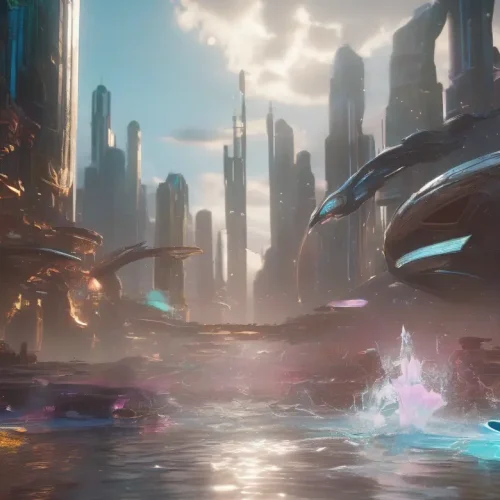The Foundation: Why Strategic Website Design is Non-Negotiable
In today’s digital-first economy, your website is more than a mere online brochure; it is your most vital digital asset, your 24/7 salesperson, and the primary point of interaction for your audience. Achieving successful website design is not a matter of chance or purely aesthetic preference. It is a meticulous discipline that blends art, science, and strategy—fusing visual appeal with the psychology of user behavior and aligning it with concrete business objectives. A poorly designed website can deter potential customers in seconds, while a strategic, user-centric design can build trust, drive engagement, and generate significant revenue.
This comprehensive guide moves beyond surface-level tips to provide a robust blueprint for success. We will explore the foundational principles of user experience (UX), delve into the mechanics of creating a high-converting digital platform, and unravel the critical, symbiotic relationship between exceptional design and top-tier Search Engine Optimization (SEO). Understanding these elements is the key to transforming your website from a passive presence into a powerful engine for growth.
Core Principles of User-Centric Website Design
At the heart of every successful website is a profound understanding of its users. User-centric design is an approach that prioritizes the needs, behaviors, and expectations of the end-user at every stage of the design process. By adhering to these core principles, you can create an experience that is not only visually pleasing but also intuitive, efficient, and satisfying.
Visual Hierarchy and Clarity: Guiding the User’s Eye
Visual hierarchy is the principle of arranging elements to show their order of importance. A successful website design uses hierarchy to guide the visitor’s attention to the most critical information, such as value propositions and calls-to-action (CTAs). This is achieved through the strategic use of:
- Size and Scale: Larger elements naturally draw more attention. Your main headline should be more prominent than your subheadings or body text.
- Color and Contrast: A brightly colored CTA button against a muted background immediately stands out. Contrast helps differentiate elements and create focal points.
- White Space: Also known as negative space, this is the empty area around design elements. Ample white space prevents a cluttered look, improves readability, and helps key information stand out.
- Layout Patterns: Studies show that users often scan websites in predictable patterns, such as the “F-pattern” (for text-heavy pages) and the “Z-pattern” (for less dense pages). Designing with these patterns in mind ensures that your most important content falls within the user’s natural line of sight.
Simplicity and Intuitive Navigation
Complexity is the enemy of a good user experience. A simple, clean design allows your content to shine and makes it easier for users to accomplish their goals. This principle applies directly to your website’s navigation, which should be logical, consistent, and predictable.
A well-structured navigation system, often referred to as information architecture, follows the “three-click rule,” which posits that users should be able to find any information on your site within three clicks. A logical site map and clear, descriptive labels for menu items are essential for helping both users and search engine crawlers understand the structure of your content.
Consistency: Building Trust and Familiarity
Consistency in design fosters a sense of cohesion and reliability. When users see familiar patterns and predictable interfaces, they can navigate your website with ease and confidence. This consistency should be maintained across several areas:
- Visual Identity: Your logo, color palette, typography, and imagery should be applied consistently across all pages to reinforce your brand identity.
- UI Elements: Buttons, links, icons, and form fields should look and behave the same way throughout the site. This reduces the cognitive load on the user, as they don’t have to relearn how your interface works on each new page.
Applying Psychological Principles in Design
Great design often leverages established psychological principles to influence user perception and behavior. Understanding these concepts can elevate your design from good to exceptional.
- Gestalt Principles: These principles describe how humans naturally group visual elements. For example, the Principle of Proximity states that objects close to each other are perceived as a single group. Using this, you can group a button with the text that describes its action.
- Hick’s Law: This law states that the time it takes to make a decision increases with the number and complexity of choices. To improve user experience, limit the options in your navigation menu and on forms to reduce decision paralysis.
- Fitt’s Law: This law suggests that the time required to move to a target area (e.g., a button) is a function of the distance to the target and the size of the target. In practice, this means important CTAs should be large and placed in easily accessible areas of the screen.
Designing for Performance and Accessibility
A beautiful design is rendered useless if it is slow, broken on mobile devices, or inaccessible to a portion of the population. Technical performance and accessibility are not afterthoughts; they are foundational pillars of a successful website design.
Mobile-First and Responsive Design
With a majority of web traffic now coming from mobile devices, a mobile-first approach is mandatory. This means designing the mobile experience first and then scaling it up for larger screens. A responsive design ensures that your website’s layout, text, and images automatically adapt to fit the screen size of any device, providing a seamless experience whether the user is on a smartphone, tablet, or desktop.
Page Speed Optimization: The Need for Speed
User attention spans are incredibly short. Research from Google shows that 53% of mobile users will abandon a page that takes longer than three seconds to load. Slow page speeds not only frustrate users but also negatively impact your SEO rankings. Optimizing images, leveraging browser caching, and minimizing code are critical steps to ensure your website is lightning-fast.
Web Accessibility (WCAG): Designing for Everyone
Web accessibility means designing your website so that people with disabilities can use it effectively. This includes individuals with visual, auditory, motor, or cognitive impairments. Adhering to the Web Content Accessibility Guidelines (WCAG) is not only an ethical responsibility but also expands your potential audience. Key practices include providing alt text for images, ensuring high color contrast for readability, and enabling keyboard navigation.
The Conversion Engine: Turning Visitors into Customers
The ultimate goal of most websites is to drive action—a purchase, a sign-up, or a contact request. A successful website design is meticulously engineered to guide users toward these conversion goals.
The Power of the Compelling Call-to-Action (CTA)
A CTA is the element that prompts the user to take a specific action. An effective CTA is:
- Visually Striking: It uses a contrasting color and is large enough to be easily seen.
- Action-Oriented: The text uses strong verbs like “Get Started,” “Download Your Guide,” or “Book a Consultation.”
- Strategically Placed: CTAs should be placed at logical endpoints of a user’s journey, where they are ready to take the next step.
Trust Signals and Social Proof
Before a user will convert, they must trust your brand. Your website design can build this trust by incorporating various signals:
- Social Proof: Displaying customer testimonials, reviews, case studies, and logos of well-known clients provides validation from third parties.
- Security Badges: Showing SSL certificates (HTTPS) and payment provider logos assures users that their data is safe.
- Clear Contact Information: A visible phone number, email address, and physical location demonstrate that you are a legitimate and accessible business.
Data-Driven Optimization: Testing and Iteration
A website is never truly “finished.” The most successful websites are constantly evolving based on user data and feedback. Tools like A/B testing (comparing two versions of a page), heatmaps (visualizing where users click), and user session recordings can provide invaluable insights into how to improve your design for better performance and higher conversion rates.
SEO and Website Design: A Symbiotic Relationship
Many view Search Engine Optimization (SEO) as a separate marketing activity, but the truth is that a successful website design is the bedrock of any effective SEO strategy. Google’s algorithms are increasingly focused on user experience signals, meaning that a site designed for users is also a site designed for search engines.
Technical SEO Foundations in Design
A technically sound website is easier for search engines to crawl and index. This includes:
- Logical URL Structure: Clean, descriptive URLs (e.g., `asaradco.com/services/website-design`) are easy for both users and search engines to understand.
- Proper Use of Header Tags: Using a single `
` tag for the main title and subsequent `
` and `
` tags for subheadings creates a clear content hierarchy.
- Clean Code: A well-coded website loads faster and is less prone to errors that could hinder search engine crawlers.
On-Page SEO and Content Integration
Design and content must work together. A great design enhances the readability and engagement of your content. This includes using legible fonts, short paragraphs, bullet points, and relevant imagery to break up text. From an SEO perspective, the design must seamlessly incorporate keywords into headings and body content without compromising the user experience.
How Great UX Boosts SEO Rankings
Ultimately, the goals of UX design and SEO are perfectly aligned: to provide the best possible experience for the user. A website with a great user experience will naturally achieve higher engagement metrics:
- Lower Bounce Rate: Visitors are less likely to leave immediately.
- Longer Dwell Time: Visitors spend more time on your site engaging with your content.
- Higher Click-Through Rate: A well-designed site in search results encourages more clicks.
These positive signals tell search engines like Google that your website is a high-quality resource, which can lead to improved rankings over time.
Conclusion: Your Blueprint for a Successful Website
In summary, achieving a successful website design is a holistic process that requires a strategic fusion of aesthetics, user psychology, technical performance, and business objectives. It begins with a deep commitment to understanding the user, guiding them with clear visual hierarchies and intuitive navigation. It demands technical excellence through fast-loading pages and responsive, accessible layouts. Finally, it culminates in a conversion-focused machine that builds trust, encourages action, and is perfectly optimized for search engine visibility.
By following this blueprint, you can create a digital presence that not only looks exceptional but also delivers measurable results. For professional guidance in implementing these principles and creating a website designed for success, connect with the experts at Asarad. We specialize in crafting high-performance websites that serve as the cornerstone of your digital strategy.
Sources:






